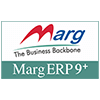What Is Hardware and Paint Software?
Hardware and paint software is a specific type of software that helps hardware and paint organizations manage and streamline their operations. Inventory management, point-of-sale (POS) systems, customer relationship management (CRM), and other tools are used to ensure that these firms run smoothly and efficiently. Inventory management is a key element of both hardware and painting software.
This enables firms to keep track of their inventory, monitor sales trends, and make smart purchase decisions. This technology allows firms to avoid overstocking or running out of popular items, resulting in higher revenue. In addition to inventory management, hardware and paint software provide POS features. This enables businesses to conduct sales transactions fast and accurately, ensuring a smooth checkout procedure for customers.
It also aids in sales data tracking, discount and promotion management, and report generation for business performance analysis. CRM functionality is also an important feature of hardware and painting software. It allows firms to establish and maintain client connections, track their preferences and purchasing history, and conduct tailored marketing efforts. This can help firms maintain loyal clients while also attracting new ones.
Furthermore, hardware and paint software frequently integrate capabilities like project management, invoicing, and work costing. These assist firms with job estimation, project tracking, and creating appropriate invoices for clients. Overall, hardware and paint software are significant tools for organizations in this market, allowing them to streamline operations, improve customer service, and increase profits. Businesses that invest in a dependable and comprehensive software solution can remain competitive and fulfill their consumers' changing needs.
What Are The Recent Trends In Hardware and Paint Software?
Recent developments in hardware and paint software have seen major technological breakthroughs, with an emphasis on improving user experience, efficiency, and overall functionality. One of the most notable advancements in this category is the incorporation of Artificial Intelligence (AI) and Machine Learning (ML) into hardware and paint software.
These clever algorithms can evaluate data and deliver useful insights, allowing users to make more informed decisions about product selection, color schemes, and project planning. Another trend is the combination of cloud-based platforms for hardware and painting software. This enables team members to collaborate seamlessly, receive real-time information, and manage projects remotely.
It also ensures that all data is securely stored and accessible from any device. Mobile applications are also becoming increasingly popular, allowing users to track their projects, manage inventories, and even make purchases while on the road. These apps also provide color matching, product recommendations, and step-by-step lessons, making them useful tools for both contractors and DIY aficionados.
In terms of functionality, hardware and paint software now have powerful tools and features that enable precise measurements, estimations, and simulations. This not only saves time and increases accuracy, but it also helps to avoid costly errors. Additionally, there is a rising emphasis on environmentally safe and sustainable hardware and paint software.
Companies are introducing items produced from recycled materials and employing non-toxic, low VOC (Volatile Organic Compound) paints, which are better for the environment and have fewer negative impacts on human health. Overall, current developments in hardware and paint software have transformed the industry, making it simpler, faster, and more efficient to execute jobs. As a buyer, you must examine these trends while making purchasing decisions to guarantee that you receive the most up-to-date and user-friendly software for your requirements.
Benefits Of Using Hardware and Paint Software
Hardware and paint software are essential resources for both enterprises and homeowners. The advantages of employing such software are vast, making it an excellent choice for anyone in need of hardware and paint solutions.
In this buyer's guide, we'll go over the primary benefits of using hardware and paint software, so you can make an informed decision before purchase.
1. Streamlined Inventory Management: One of the key advantages of hardware and paint software is more efficient inventory management. This software allows you to effortlessly keep track of your inventory, ensuring that you always have the necessary materials on hand. This not only saves time, but it also decreases the possibility of running out of crucial goods, causing delays in projects.
2. Accurate Cost Estimation: Hardware and paint software also provide the benefit of accurate cost estimates. By entering the type and quantity of materials required, the software can provide an accurate cost estimate for your project. This removes the need for manual computations and reduces the possibility of errors, ensuring that your budget stays on track.
3. Enhanced Project Planning: Planning a hardware and paint project can be difficult, especially if you are dealing with various chores and materials. However, with the help of software, you can build precise project plans that include all of the required tasks and resources. This ensures that your project operates smoothly from beginning to end, with no unforeseen hiccups.
4. Visualize Project Results: Many hardware and paint software include 3D modeling capabilities, letting you to see the final result of your project before you begin. This capability is especially beneficial for larger tasks, as it allows you to make any necessary changes before beginning physical labor.
5. Improved Efficiency And Productivity: By automating many of the processes required in hardware and paint projects, software may dramatically boost efficiency and production. This is especially useful for enterprises since it allows them to take on more tasks and execute them more quickly.
6. Improve Customer Service: You may improve your customer service by using hardware and paint software. The software allows you to communicate more efficiently, discuss project plans, and set realistic expectations for project timeframes and prices. This helps to establish consumer trust and contentment.
Important Factors To Consider While Purchasing Hardware and Paint Software?
When it comes to choosing hardware and paint software, there are various aspects to consider. As a buyer, you want to be sure you're making a good investment that will not only fulfill your immediate needs but also have the capacity to expand with your company.
The following are the essential factors to consider while selecting hardware and paint software:
1. Compatibility: Before making a selection, make sure the software is compatible with your hardware. Make that the software works with your operating system, processor, and other hardware components. Using mismatched software can cause technical issues and reduce your system's overall performance.
2. Features And Functionality: It is critical to identify the features and functions that you need from the hardware and paint software. Do you need basic paint mixing and color matching capabilities, or do you want more advanced services such as inventory management and order tracking? Consider your business requirements and select software that includes the features and functionalities you require to streamline your operations.
3. Usability: Any software should have an easy-to-use interface and navigation. Choose software that is simple to use and does not require substantial training for your personnel to run. This will save time and limit the possibility of error.
4. Technical Help: When purchasing hardware and paint software, you should check that there is solid technical help accessible in the event of a difficulty. Check to see if the software vendor provides 24/7 customer support, training, and resources to help you get the most out of the software.
5. Cost: The cost of software is an important issue for any consumer. However, quality should not be sacrificed in order to save money. Instead than focusing solely on the upfront cost, consider the software's value and prospective return on investment.
6. Data Security: Managing sensitive client information is a crucial duty for any company. As a result, it is critical to select hardware and paint software that provide strong data security protections to secure your clients' information and your company's reputation.
7. Integration: If you already use other software or systems in your organization, select gear and paint software that works flawlessly with them. This will minimize the need for manual data entry and allow for more efficient data sharing across multiple systems.
What Are The Key Features To Look For In Hardware and Paint Software?
When it comes to selecting hardware and paint software, every buyer should consider a few crucial qualities. These features not only provide a seamless user experience, but they also aid to increase productivity and efficiency.
Here are the main features to consider when selecting hardware and paint software.
1. Inventory Management: Good hardware and paint software should include a strong inventory management system. This allows you to simply monitor the stock levels of your hardware and paint materials, ensuring that you never run out of vital goods. Look for features like real-time inventory tracking, automated reordering, and barcode scanning.
2. Resource Management: In addition to inventory management, software designed for hardware and paint should provide resource management features. This contains tools for maintaining personnel schedules, organizing work orders, and assigning jobs. These characteristics can help to streamline procedures and increase overall efficiency.
3. Customer Relationship Management (CRM): Every business needs a CRM system, and hardware and paint businesses are no exception. Look for CRM software that can manage customer profiles, track sales and orders, and create customized marketing campaigns. This will contribute to increased client retention and loyalty.
4. Point Of Sale (POS) System: A POS system is essential for any business, including hardware and paint stores. Look for POS software that is easy to use and efficient, with capabilities like barcode scanning, numerous payment choices, and seamless interaction with inventory and CRM systems.
5. Reporting And Analytics: The capacity to create extensive and accurate reports is critical for any firm. Look for hardware and paint software that provide extensive reporting and analytics capabilities, such as sales data, inventory records, and consumer purchase trends. This allows you to make data-driven decisions and find areas for development.
Why Do Businesses Need Hardware and Paint Software?
When establishing a hardware or painting business, it is critical to have the necessary tools and resources. This is when hardware and painting software come into play. This specialist software is specifically built to satisfy the unique demands of firms in various industries, providing a plethora of benefits and features that can significantly increase efficiency, production, and overall operations.
Inventory management is one of the most important reasons firms need hardware and paint software. These businesses work with a diverse set of tools, equipment, and products, making it difficult to keep track of everything manually. Businesses can use specialized software to easily maintain and monitor inventory levels, discover low stock, and make smart purchase decisions.
This helps to avoid stock shortages and surplus inventory, saving both time and money. Furthermore, the software has tools for project and financial administration. Estimating, bidding, and project costing tools may be available for hardware enterprises, whereas invoicing and payment processing may be beneficial to paint businesses.
These capabilities streamline the entire project process, beginning to end, ensuring that projects are finished on schedule and under budget. Additionally, hardware and paint software frequently include customer management tools. This is extremely useful for firms in these industries since it enables them to track consumer information, orders, and interactions, resulting in a more tailored and efficient customer experience.
This can lead to enhanced consumer happiness and loyalty, resulting in more business income. Another advantage of hardware and painting software is the ability to create thorough reports. This enables firms to examine their performance, find areas for development, and make informed decisions using real-time data. This improves efficiency and helps businesses remain competitive.
How Much Time Is Required To Implement Hardware and Paint Software?
When evaluating the deployment of hardware and paint software, it is critical to recognize that the time necessary will vary depending on several aspects, including the size of the business, the complexity of the program, and the level of customization required. However, on average, the implementation phase can last from a few weeks to a few months.
The first step in deploying hardware and painting software is to examine your company's requirements and identify the features and functionalities that are critical to your operations. This will assist you in selecting the software that best meets your needs and lowers implementation time. After selecting the program, the implementation phase begins. This involves data migration, system integration, and personnel training.
The time necessary for data migration will again be determined by the volume of data to be transferred. Integrating the software with existing systems may also take considerable time, particularly if there are compatibility difficulties. Training is an important aspect of the implementation process. It is critical to ensure that all staff are comfortable and proficient with the software.
This could include training sessions, workshops, and one-on-one assistance, which could last a few days to a couple of weeks. In addition to these tasks, there may be a need for software customisation to fulfill specific business requirements. This can increase the installation time. It is vital to highlight that hurrying through the installation process can result in errors and inefficiencies, reducing the software's benefits.
Overall, the time necessary to integrate hardware and paint software will vary depending on your company's individual requirements. To guarantee a seamless and effective implementation, collaborate closely with the software provider and establish a clear timeframe.
What Is The Level Of Customization Available In Hardware and Paint Software?
Hardware and paint software include a variety of customization options to meet the specific demands of hardware and paint enterprises. These features allow customers to customize the software to meet their individual needs, making it an invaluable tool for their operations.
Let's examine more closely at the level of customization available in hardware and paint software, as well as how it might help your business.
1. Customizable Dashboard And Interface: The first level of customization accessible in hardware and paint software is the ability to change the dashboard and interface to your liking. This lets you to organize the features and tools you use frequently in a way that is most useful for you. You may also personalize the color palette, font size, and layout to create a unique user experience.
2. Product Catalog: With hardware and paint software, you can tailor your product catalog to solely contain goods that you sell or utilize. This makes it easy to navigate the software and expedites the process of adding products to invoices and purchase orders. You can also establish bespoke pricing for individual goods or categories to keep your pricing strategy adaptable and adapted to your company's needs.
3. Inventories Management: One of the most significant advantages of hardware and paint software is their capacity to effectively manage inventories. With customization options, you may configure the software to track and manage inventory levels in a way that is appropriate for your organization. This involves establishing reorder points, assigning specific goods to different warehouse locations, and customizing notifications for low stock levels.
4.Generic Or Manufacturer-Specific Paint Formulas: Many hardware and paint stores provide bespoke paint mixing services, which necessitates access to precise paint formulas. Paint software allows you to enter generic paint formulas or import manufacturer-specific formulas to achieve perfect color matching. This level of personalization ensures that your customers get the precise color they want and fosters trust in your brand.
5. Customizable Reports: Access to real-time data is critical for making sound business decisions. Hardware and paint software both offer customisable reporting capabilities, allowing you to gain insight into numerous elements of your organization. You may choose which data to include in reports and how they are presented, making it easier to analyze patterns, identify problem areas, and make appropriate modifications.
Which Industries Can Benefit The Most From Hardware and Paint Software?
The hardware and paint industry serves a diverse range of enterprises, including construction companies and home improvement outlets. Whether you're a manufacturer, distributor, or retailer, combining hardware and paint software can transform your business operations. This technology-driven approach streamlines operations, improves efficiency, and boosts overall productivity. But which sectors will profit most from this software?
Let's have a closer look.
1. Construction Industry: The construction sector relies extensively on hardware and paint materials for new build, remodeling, and maintenance operations. Contractors and construction businesses can use hardware and paint software to manage inventories, track orders and deliveries, and monitor project budgets. This software also allows for smooth collaboration and communication among contractors, suppliers, and clients, which reduces project delays and increases customer satisfaction.
2. Manufacturing Industry: Manufacturing enterprises that produce hardware and paint goods can also benefit from this software. It enables them to improve their production operations, optimize inventory levels, and ensure that orders are delivered on time. Furthermore, real-time data and analytics enable manufacturers to make informed decisions about cost-effective production, market demand, and distribution routes.
3. Home Improvement Stores: A digital system can transform the business of retailers who sell hardware and paint supplies. This program allows them to manage their inventory, monitor sales and purchase orders, and provide real-time data. Retailers can use customer relationship management capabilities to study consumer patterns and preferences in order to curate their product offerings and increase sales.
4. Facility Management: Facilities management firms that maintain commercial or residential premises can also profit from hardware and paint software. This program automates the procurement process, allowing businesses to manage their resources more efficiently and save money. It also provides insight into property maintenance history and aids in the planning and execution of preventive maintenance chores, hence prolonging the property's lifespan.
Conclusion
To summarize, selecting the correct hardware and paint software for your business can be a difficult undertaking, but with the right information and study, you can make an informed decision that will benefit your company in the long term. We've covered everything you need to know about acquiring hardware and paint software, from compatibility and features to price and customer service.
First, make sure the software is compatible with your current hardware and operating system. This will enable seamless integration and prevent any future technical concerns. Second, analyze the software's features and how they relate to your business needs. Look for solutions that can help you streamline your procedures, increase productivity, and produce reliable data and reports.
Third, it is advisable to examine the rates and packages offered by various suppliers. While price should not be the sole consideration, it is critical to evaluate your budget and the value you will receive for your investment. Furthermore, don't underestimate the value of dependable customer service. Look for a provider that provides outstanding customer service and technical assistance, as this can significantly impact the success of your deployment.
Finally, do not haste to make a decision. Take the time to demo and test the program, study reviews, and seek opinions from industry professionals. This will allow you to make an informed selection about the best hardware and paint software for your business. We hope this buyer's guide has provided you with useful information and advice to help you make the best decision for your hardware and paint software requirements. Remember to prioritize your business needs and carefully assess the possibilities available before making an informed decision that will benefit your company in the long run.












